Historic Washout in Bond Market Clearly Impacts Precious Metals - Weekly Wrap Up
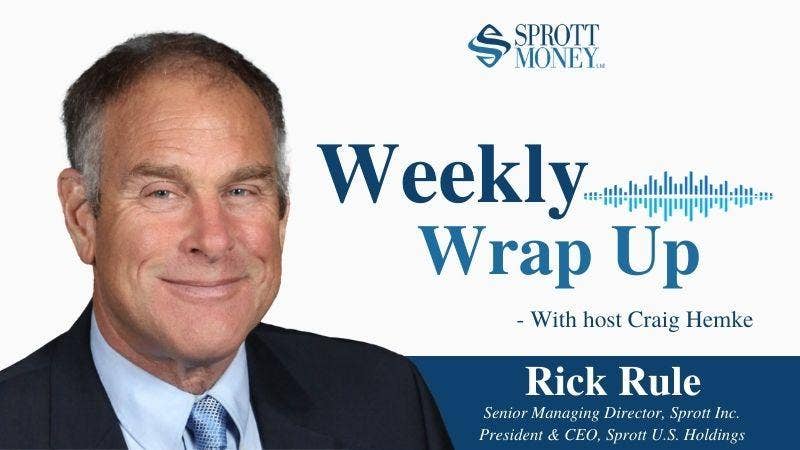
Did you know? You can get the Sprott Money Weekly Wrap Ups, Ask The Expert, special promotions and insightful blog posts sent right to your inbox.
Sign up to the Sprott Money Newsletter here.
Extraordinary moves in the 2- and 10-year notes are affecting all markets, but the impact has especially been felt on the precious metals. This week, host Craig Hemke and legendary resource investor Rick Rule of Sprott, Inc. break down all the gold and silver news you need to understand what the latest moves mean for you.
In this edition of the Weekly Wrap-Up, you’ll hear:
- Why the coming decade might be like the 1970s.
- The latest on the Silver Squeeze movement.
- Plus: The inner workings of the Sprott-managed PSLV.
“The move in precious metals prices is most often in direct correlation with the direction of interest rates, particularly on sovereign interest rates, and particularly on U.S. sovereign interest rates. So, any firming in the interest rate is good for the precious metals price. Speculators need to determine whether this move higher in interest rates will continue.”
To hear Rick’s full thoughts on the week’s gold and silver news, listen here:
Male: You're listening to the "Weekly Wrap-Up" on Sprott Money News.
Craig: Happy Friday from Sprott Money News at sprottmoney.com. It's Friday, February 26th. And it's time for your "Weekly Wrap-Up" podcast. I'm your host, Craig Hemke. Joining us this week is Rick Rule. Many of you are familiar with Rick and his involvement at Sprott Inc. And he is a valued mind in the precious metals natural resource sector. And it's always great when he sits in for Eric. So Rick, thank you so much for spending some time with me today.
Rick: Well, as I say, it's always a pleasure to talk to your audience. And it's a real honor to substitute for Eric from time to time. Big shoes to fill. And I'll do my best to fill them.
Craig: You usually do a very nice job. And again, if you enjoy today's podcast or Ask the Experts segments, or any other content of Sprott Money, please feel free to like it, subscribe it, or share this information on whichever channel you're listening to. And of course, always remember, these podcasts are brought to you by sprottmoney.com. We've got a whole bunch of new gold and silver products to purchase. Please go to the site itself or just call us directly at 888-861-0775. And one of our friendly representatives will be happy to help you out.
Now, speaking of friendly representatives, my friend, Rick, has a little breaking news to share as he has been a friendly representative for Sprott Inc for quite some time. However, it sounds like my old buddy, Eric, has got his rocking chair. It sounds like you might need to invest in one yourself.
Rick: Well, I think that retirement will look for me very much like retirement looks for Eric, which is to say full speed ahead. The news, which was announced in the Sprott quarterly results today is that I'm retiring from most aspects or at least many aspects of my regulated professional career. I will stay on as a Sprott director, I will stay on as an advisor to Sprott, I will stay on as the largest shareholder of Sprott, and I believe the largest private client of Sprott. I will continue to advise the capital markets and the wealth management teams on both sides of the border.
But what I will cease doing is any regulated function within Sprott, which is to say, I'm giving up my Series 7 license, that kind of thing. I'm continuing with my registered investment advisor license because I will assist our wealth management teams in the management of some of the Sprott products. So how would you say? Like Eric, I'm changing direction, I think, more than functionally retiring [crosstalk 00:02:53.031].
Craig: Yes. And it will free you up to speak, I guess, more freely on individual companies and other things.
Rick: Yes, absolutely. One of the things that's been a frustration is the regulation around...the constraints around regulated people to answer investors' questions honestly and forthrightly. I understand the reason for the regulation. But from the regulator's point of view, I just feel unreasonably constrained myself as a person with good intention to have the information that I can impart to investors constrained by regulations that are really meant to constrain bad actors as opposed to good actors. And mercifully, I've reached a point in my career where I don't have to do things that frustrate me anymore.
Craig: That's right. That's right. That's the way it's supposed to be. All right. Again, so for the folks that have sent in individual names, like, we like to go over with Eric, we can't do that today, but we've got a couple of general questions we wanna get into. We also want to talk about the PSLV because a lot of people have about the operations of that fund. But first, Rick, I've gotta ask you about what we're currently seeing in the markets. We had just almost a historic washout in the bond market yesterday.
The move in the two-year note was extraordinary. And the move, just in like, say, the 10-year note has been amazing. Just this year, it's up 50%, from 1% to now 1.5%. This is clearly impacting all of the markets, but specifically the precious metals. Can you talk a little bit to that? And where you see perhaps interest rates going or Fed actions in the near future?
Rick: Well, I think you nailed it on the head, first of all. The move in precious metals prices is most often in direct correlation with the direction of interest rates, particularly on sovereign interest rates and particularly on U.S. sovereign interest rates. So any firming in the interest rate is good for the precious metals price. Speculators need to determine whether this move, higher in interest rates, will continue. The congressional budget office suggests that the U.S. dollar is depreciating at about 1.6% a year. So a 1.5% yield on the U.S. 10-year treasury means effectively that you still have negative real interest rates, but only negative real interest rates by 10 basis points.
The move up in the interest rate, of course, collapses bond values, you know, for existing bonds. My own belief is that the increase in the interest rate paid probably is unsustainable in the U.S. economy, given the size of the deficit. If you look at the fact that we have $26 or $27 trillion on balance sheet liabilities, $20 trillion net of the Fed's own balance sheet, a doubling of the interest rate, not quite a doubling, but nearly frankly a doubling of the interest rate of the U.S. 10-year treasury imposes a real burden on the budget, a budget that I think there's bipartisan support to go more deeply negative on.
The other thing is that every other interest rate in the economy is set off the U.S. 10-year treasury. We have had a very healthy housing market in the United States and a very healthy construction market despite the fact it's been somewhat COVID constrained. If you take the U.S. 30-year fixed mortgage interest rate up by 150, 200 basis points, you really begin to constrain demand for new houses, which means that you impact an important part of the U.S. economy. Similarly, consumer durables and automobiles, if you take up the interest rate that buyers have to assume to buy a new car on a note, as an example, you constrain the affordability of automobiles, you constrain new car sales, and of course, you constrain the economy.
So while I actually would love to see the market, rather than the Fed determine interest rates, my suspicion is that the economy is not as strong as they would like to believe, and that they may lose that fight on interest rates. It's very interesting. Maybe the only lovely thing about growing old is that you have seen circumstances like this before. And I saw a circumstance like this in the mid-70s. When they allowed the U.S. interest rate to increase, really, truly whacked the bond market, and really, truly whacked the gold market. Before, by the end of 1975, losing their nerve and artificially reducing the interest rate again, which kicked off that tremendous bull market that resources enjoyed in the 1975 to 1981 timeframe. I'm not saying that it's definite to pass as prologue, but I've certainly seen this movie play before.
Craig: Right. And we've talked about that, you know, that this does resemble a lot of the late 1970s with kind of a stagflationary environment and steeply negative real interest rates. And there's real value to the central bankers trying to inflate away the debt, wouldn't you say?
Rick: Yep. You know, the way I see it, as you know, I'm no economist, but with $26 or $27 trillion on balance sheet liabilities and $120 trillion net present value of off balance sheet liabilities, things like Medicare and Medicaid, the only way I see out of it would be a series of honest defaults, which is to say, the voters would say to beneficiaries of entitlements like me, "We promised you social security. We promised you Medicare and Medicaid, but we don't have the money, we can't pay." That's one way to do it, an honest default. It's politically unpalatable to be sure.
The other way is to kick the can down the road, which is to say inflate away the net present value of those liabilities, sort of extend and pretend, which is what we did in the 1970s. There may be other answers, but they're not readily apparent to me. The idea that you can service a national debt that on balance sheet and off balance sheet exceeds $140 trillion with a budget that is $3 trillion negative annually, just doesn't make any economic sense to me.
Craig: And there's history of the Fed employing yield curve control too, back in the '40s and '50s. So let me try that again. Okay, Rick, let's get into the PSLV because in your time at Sprott, you were around when this fund began trading the PHYS preceded it back into whatever it was, 2010, 2011? So I know you're intimately familiar with them, but no one better to speak about how they operate than you. You know, this silver squeeze movement has been with us for a month. And in my estimation, I would imagine yours too.
The best thing we can do if we're gonna effect change and deleverage the system is to withdraw physical metal from it to just steadily acquire physical metal. It's a good diversification out of dollars anyway. So far, it seems as if that message is getting through. And as I peruse Twitter and Reddit, I see there's a real movement for people to buy the PSLV. I have seen and then you kinda counted up month to date. Just this month, now, February, the PSLV has added 29 million ounces. So let's start there, Rick. Questions that I've seen often posed are, where in the hell are they getting 29 million ounces? Do you wanna start there?
Rick: Mercifully, Sprott has been an active player in silver market for a very long time. And the consequence of that is that we are actually pretty good at trading and buying silver. And secondly, we are regarded by counterparties, which is to say the big banks, as very, very good customers. The second thing is that, well, silver has been in extraordinarily short supply in retail denominations, which is to say in small product, it has been much more freely available in institutional quantities. The retail demand caught everybody flatfooted. I'm sure it caught Sprott Money flatfooted.
And at the same time that happened, the constraints in refineries from COVID meant that the traditional way we met demand, which was the refineries buying large bars and re-refining them and recasting them with small bars couldn't occur. And refineries from the scale of the Royal Canadian Mint, all the way down to the small private refineries in Switzerland had production difficulties at the same time that demand ramped up dramatically.
We were early on in the rush, able to buy fairly large quantities as the press release suggests of physical metal in North America, which is to say Toronto and New York. More recently, we have had to go to London to buy metal. We hadn't really noticed a dramatic tightness in institutional quantities of silver until very recently. But thus far, our team and the traders for the intermediaries that we have traditionally done business with over the last 10 years have been able to acquire very large amounts of metal. It doesn't mean, Craig, that it's been easy. And my hat is absolutely off to our own desk and the desks of the wonderful dealers who have supported us through this period of really unprecedented growth.
Craig: So folks can know that 29 million ounces is stuff that is actually sourced physically, and it's being held, allocated by...
Rick: I don't think this will happen, but in the circumstance where we are unable to obtain physical metal, and people should check our website for the description of the product and the constraints that we operate under. But to the extent that we were unable to source physical metal, we would have to presumably stop offering units on the exchange. We are, unlike ETFs, required to have functionally all of our assets in precious metals. A much fuller description of this can be found at the Sprott website.
Craig: And you mentioned on the wholesale market, such as generally being acquired, or do you go out and deal with mines directly sometimes? Where generally does Sprott find the silver?
Rick: We have to have good delivery silver, which is to say this, you know, silver that is within the system. In other words, where we could reintroduce it to Cognex or reintroduce it to the LME. So we can't acquire necessarily directly from mines. We can acquire it directly from in-system refiners, I believe. But much more normally, we are acquiring in-system bullion holdings. It is true that the in-system bullion holdings, finally, I believe, are beginning to get tight. If you would have asked me the question a month ago, a month and a half ago, and this is conjecture on my part, by the way, I'm not on their desk [SP].
Craig: It's okay.
Rick: If you would have asked me the question four weeks ago or six weeks ago, I would've said that institutional quantities of silver, if you were prepared to shop in Europe, as well as North America, were very, very ample. They are less ample today, I believe. But I wanna disclaim, I'm not on their desk. And I'm not privy to that.
I do know that I have expressed concern from time to time as a director of Sprott and a holder of PSLV as to whether we were able to obtain physical silver. And as any of your listeners can tell by going to our website, that is a requirement of the trust system. Eric, when he set up these products, was extremely clear. And the articles of incorporation of all of our physical trusts require that except for very small amounts of cash as working capital, that the only permitted assets in these trusts is physical precious metals.
Craig: Somebody sent in a question about the amount of cash that has to be held, it's like any other, I guess let's just say fund, you've gotta keep some cash on hand for redemptions every day, so you're not liquidating silver for anybody that has to sell some, isn't that right?
Rick: Yeah. I have to admit that at age 68, my memory with regards to that is not as good as it was. But that information is available at the Sprott website. And as you suggest, it's, you know, sort of the amount of money that's required for the day-to-day operations of the fund, which is really functionally de minimis.
Craig: You know, this came up again recently about when the fund was originally set up and the time it took to get delivery of that physical metal, I don't know, can you speak to that? And have you heard anything from the traders about...I mean, you talk about, you know, the institutional supply-demand, I mean, are they sensing any reticence from dealers to actually ship the metal out?
Rick: No. As far as I know, I shouldn't say that. I'm not on their desk. What I can say is that gold ships easier than silver because you have larger dollar volumes in much smaller amounts. This is conjecture here because I'm not involved in that part of our business, but I suspect that given the quantities of silver that we're buying, that the logistics involving moving it from where it's domiciled when we buy it, and remember, we take physical possession, not delivery receipts. Moving it from there to the Royal Canadian Mint is a bit of a challenge for us.
Craig: Well, how about this one too, Rick. I think there was a time last fall, September, maybe October, when the PSLV filed a $1.5 billion, I think it was 1.5 billion Canadian, a shelf offering. A lot of people misunderstood at the time. They thought that meant the fund was gonna immediately go out and buy $1.5 billion worth of silver. And that's not what shelf offerings are for. You just put them out there so that you can do that over time. Well, now, to me, we're getting close. I mean, 29 million ounces this month is about 800 million U.S. Can you speak to that process? Will there come a time, do you think? I mean, if we're filling up that shelf, where the Sprott folks are gonna have to issue another one...
Rick: I would prefer that you address that question to the John Ciampaglia and people who run that operation for Sprott, merely, because I don't know the answer. And I wouldn't wanna misinform your audience.
Craig: I understand. If anything though, I think we can leave it with folks to understand that any investment in PSLV is actually and has to be physical metal. None of this warehouse receipt, you know, promissory note stuff that can then just get... I mean, we saw it. What was the numbers into the SLV? I mean, they ran in 110 million ounces. And now they've run back out 110 million ounces. And that would seem to be a logistical impossibility. But we know with PSLV, we're dealing with real metal.
Rick: And, you know, these are great questions. And I would really invite your listeners to the Sprott website, where there is a very fulsome discussion, including links to that shelf registration, which is a very fulsome document, and one very, very, very worth reading.
Craig: No doubt about that. And again, that's where everything should start is with that level of research to find out what you own, how the process works, what you're buying, everybody has to always do that level of due diligence. One last thing on the silver market, Rick, and then we'll call it a day. You know, mine supply, I don't know where we're gonna come in last year because of COVID, but maybe 850 million ounces. I've often, you know, heard the number being 500 to 600 million ounces gets used up industrially every year, leaving just a couple hundred million ounces for investment purposes. Do you agree with those numbers? Because if that's true, we're getting close to buying all that up as we go along here.
Rick: I mean, it's very difficult to understand silver supply. Because silver supply from primary silver mines is only about 20% of new mine supply. The rest of supply, new mine supply, comes as a by-product of gold mines, copper mines, wet [SP] mines, and zinc mines. The second thing is that we've never had a good handle on physical inventories, particularly in South Asia where silver has been a low unit value store of wealth, a substitute for gold, as an example, among the Indian Bengali, Pakistani, and Sri Lankan peasantry. So the amount of physical silver hoarded in the Indian sub-continent has always been a mystery. With regards to industrial demand, particularly in things like solar panels and increasingly as a germicide, industrial demand for silver is extremely healthy. The number that I think needs to give speculators and investors some concern is the amount of silver that's held as good delivery silver against the silver futures markets. And that's where a real tightness could occur.
The futures markets, the COMEX markets, are so large and so liquid. They normally cash settle, which is to say no real silver changes hands. But the dangerous leverage that I see in the silver market is the imbalance between the inventories available for good delivery, which by the way, Sprott is depleting on a daily basis, and the potential obligations that exist among hedgers and speculators in the futures markets. There is speculation too, which I won't comment on that there are, you know, very large systemic shorts in the futures market. You know, I'll leave the internet to discuss that.
But I will say that it troubles me structurally to consider the amount of silver in-system available for good delivery relative to the daily volume of long and short positions in the futures market, including near settlement futures. Meaning the silver market has moved from a period in time where you could be nervous about the amount of good delivery silver available relative to trading volumes. But you could see over two or three years that settlements one day occurred easily. I have some nervousness, although I'm not a skilled practitioner in the futures markets, that the amount of silver available for good delivery relative to the futures market... How do I say this politely? It's questionable.
Craig: I would say that was a very elegant, and reasoned, and experienced description of the entire silver squeeze movement, my friend.
Rick: You know, maybe six months from now, when I'm further out of the regulated environment, I can be more specific.
Craig: I like that idea. Yes. From your rocking chair with a fine glass of adult beverage sitting next to you as you watch the sunset.
Rick: Correct.
Craig: All right, Rick, hey, I really, really appreciate you carving out some time to do this call, to be able to sit in for our friend, Eric, who we hope sometime in the near future, will be able to join us again on a regular basis. But for now, you've more than capably filled his shoes. I wanna remind everybody, again, if we can effect any kind of change by withdrawing physical from the system, great. However, any physical is always a great diversification of your dollar reserves out of dollars into sound money. So always remember when you're in the market to check out sprottmoney.com, they are the sponsor of all of this educational content. So we wanna reward them with your business. Again, lots of product there at this time. So go to sprottmoney.com, or you can always just pick up the phone, 888-861-0775. Rick, anything else on your mind?
Rick: Yes, Craig. I'd like to extend our normal offer to the Sprott family, which is to say, I am happy to rank any of your natural resource stocks including your silver stocks. All you need to do is go to our website, sprottusa.com/rankings. List your natural resource holdings, and I will rank them 1 to 10. I will comment on individual issues where I think my comments might have value. And if you put in the question section of the rankings form the word chart, I will happily send out the Barron's Gold Mining Index, which is the most inclusive and longest running precious metals equities index in the world. I'm not sending it out because I'm any practitioner of technical analysis, but rather, I think it's the best visual aid available to understand, if you will, the anatomy of bull markets and bear markets in precious metals and equities, and also explains the volatility that we're explaining today...you know, that we're experiencing today, pardon me, in historical context. Once again, sprottusa.com/rankings.
Craig: Forward slash being the important part. I had a couple of people last time say, "I'm not getting through," and they were using back slash.
Rick: Right.
Craig: Well, Rick, thank you so much again. Very much appreciate your time. We'll see where the rest of this day goes. We'll see where next week goes. But again, we gotta keep our eyes on the big picture. And big picture I think remains in our corner. Have a great weekend. And congratulations on the big announcement today.
Rick: Thank you, sir. I enjoy this process. Let's do it again.
Craig: From all of us at Sprott Money News at sprottmoney.com, thank you for listening. Talk to you again next week.
Don’t miss a golden opportunity.
Now that you’ve gained a deeper understanding about gold, it’s time to browse our selection of gold bars, coins, or exclusive Sprott Gold wafers.
About Sprott Money
Specializing in the sale of bullion, bullion storage and precious metals registered investments, there’s a reason Sprott Money is called “The Most Trusted Name in Precious Metals”.
Since 2008, our customers have trusted us to provide guidance, education, and superior customer service as we help build their holdings in precious metals—no matter the size of the portfolio. Chairman, Eric Sprott, and President, Larisa Sprott, are proud to head up one of the most well-known and reputable precious metal firms in North America. Learn more about Sprott Money.
Learn More
You Might Also Like:



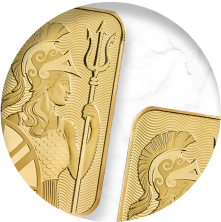
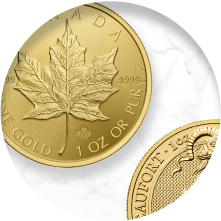
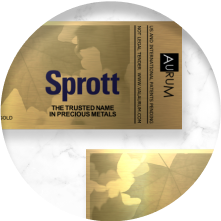
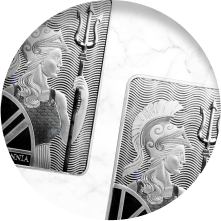
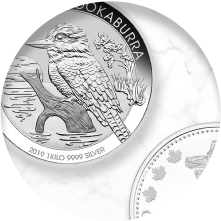
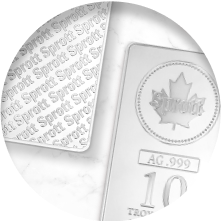

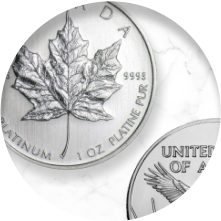

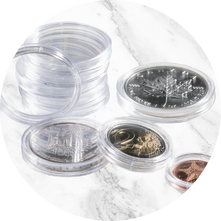
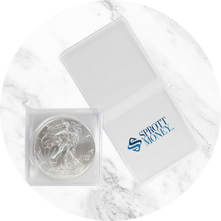


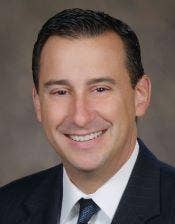
Looks like there are no comments yet.